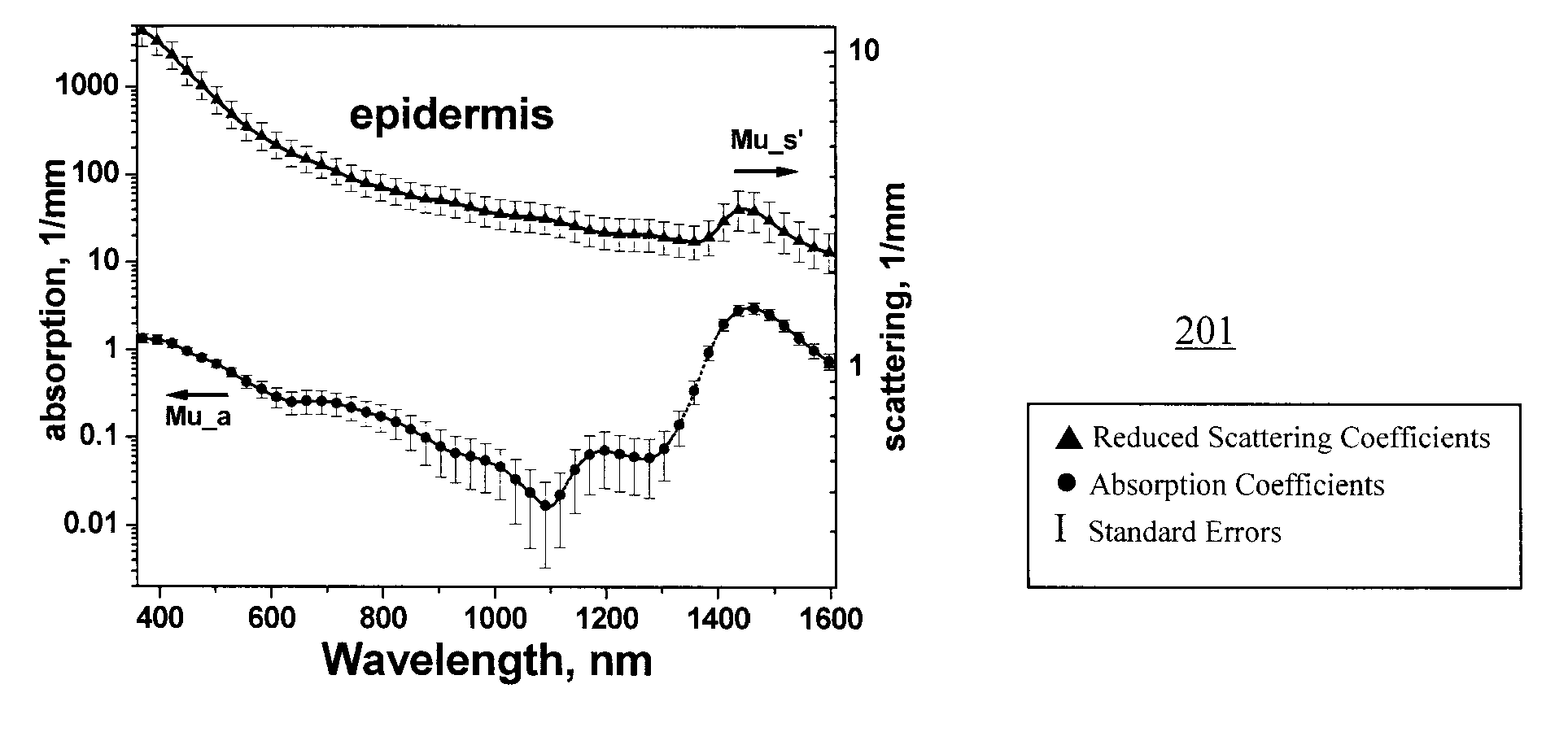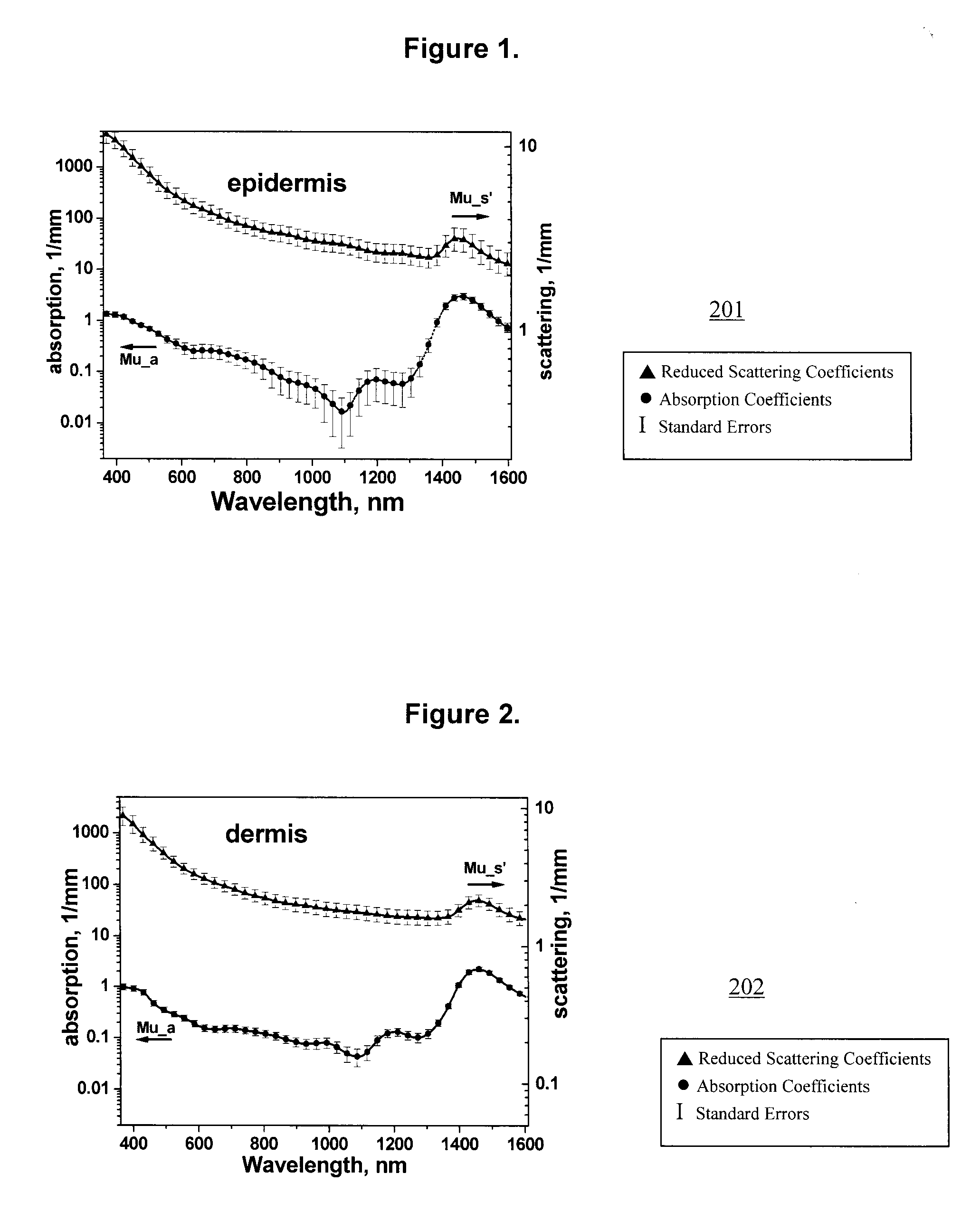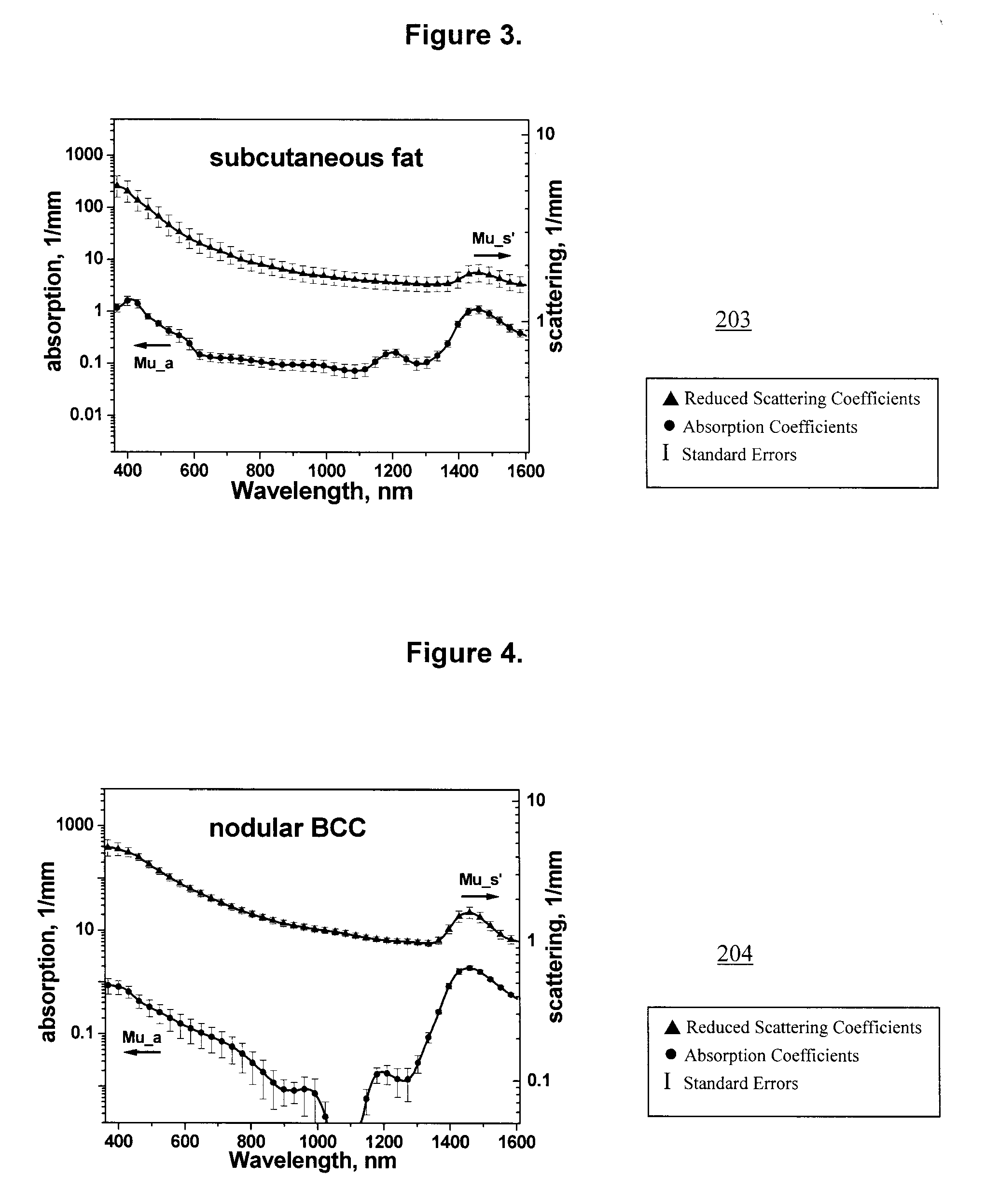Optical wavelength range for high contrast imaging of cancer
a high contrast, optical technology, applied in the field of optical imaging of cancerous and precancerous tissue, can solve the problems of inability or inability to bring a probe into direct contact with the tissue needing to be imaged, prone to size limitations, and difficult or impossible in vivo detection of many cancer tissues by the transillumination apparatus, etc., to achieve the effect of higher or lower scattering coefficien
- Summary
- Abstract
- Description
- Claims
- Application Information
AI Technical Summary
Benefits of technology
Problems solved by technology
Method used
Image
Examples
Embodiment Construction
[0040]Reference will now be made in detail to the present preferred embodiments of the invention, examples of which are illustrated in the accompanying drawings. The method and corresponding steps of the invention will be described in conjunction with the detailed description of the system. The devices and methods presented herein may be used for imaging and diagnosing cancer tissues. The present invention is particularly suited for in vivo optical imaging of cancerous tissues in which cancerous tissue is contrasted with adjacent healthy tissue.
[0041]Differences in absorption and / or scattering of cancerous and normal skin have the potential to provide a basis for non-invasive cancer detection. In accordance with the invention, it was discovered that there are significant differences in the scattering of cancerous and healthy tissues in the spectral range from 1050-1400 nm. In this spectral region, the scattering dominates the absorption by at least one order of magnitude, the scatte...
PUM
 Login to View More
Login to View More Abstract
Description
Claims
Application Information
 Login to View More
Login to View More - R&D
- Intellectual Property
- Life Sciences
- Materials
- Tech Scout
- Unparalleled Data Quality
- Higher Quality Content
- 60% Fewer Hallucinations
Browse by: Latest US Patents, China's latest patents, Technical Efficacy Thesaurus, Application Domain, Technology Topic, Popular Technical Reports.
© 2025 PatSnap. All rights reserved.Legal|Privacy policy|Modern Slavery Act Transparency Statement|Sitemap|About US| Contact US: help@patsnap.com



